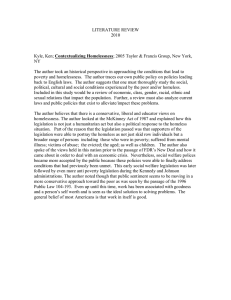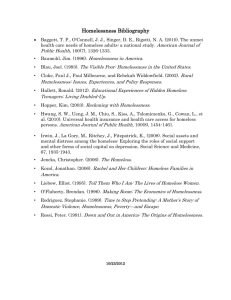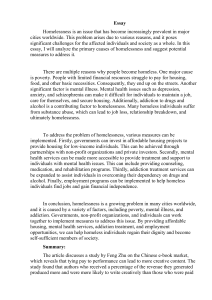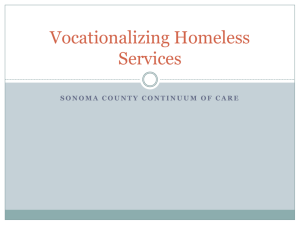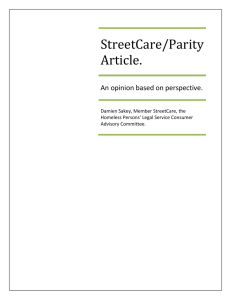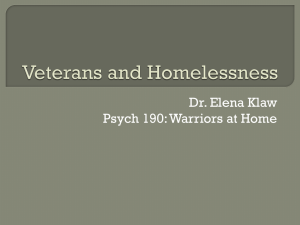Homelessness as an investment priority: innovation
advertisement
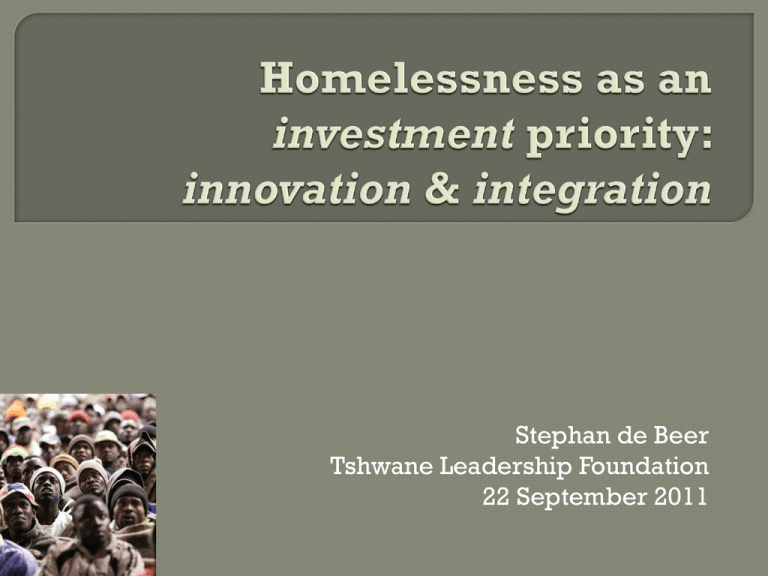
Stephan de Beer Tshwane Leadership Foundation 22 September 2011 Changing face of homelessness What/who are we speaking of? Homelessness is everywhere Street homelessness Economic Situational Chronic “Near homeless” Institutional captivity / impotency The language we use Lack of coherent, integrated strategy & policy Dependency versus empowerment models From stagnation to innovation From exclusion to integration From welfare to investment analysis > mapping / strategic planning innovation > generating creative responses integration > radical, holistic integration investment > makes business sense / cost-effective beauty > ethic of aesthetics solution > long-term change / policy / replication 87% reduction in street homelessness in Times Square Methodology of integration An accurate registry of street homeless people per neighbourhood Prioritize for housing those who are the most vulnerable, by means of a vulnerability index Simplify the process for helping individuals secure permanent housing Provide supportive programmes and services, e.g., mental health counselling, job training, financial management skills, to assist individuals with maintaining their new homes and creating stable and purposeful lives (www.commonground.org) continuum of care & empowerment presence community empowerment Pre-phase Phase 1 Phase 2 Re-integration Physical Homeless Poor shelter Transitional housing Social housing Housing security Economic Unemployed Underemployed Skills training Employment preparation Employment Long-term access employment / SMME-creation sustainable livelihood Psychosocialspiritual Socially & emotionally disconnected Counseling Volunteering; Support groups forums; churches leadership community assets Contributing neighbour & citizen vision TOWARDS A CITY OF SHALOM – healthy, vibrant communities flourishing in God’s presence Physical, economic & psycho-social-spiritual integration Personal, family & community integration Contributing as neighbour, citizen and tax-payer Integrated approaches & models Public-private-community partnerships Inter-departmental cooperation Language of inclusion versus language of stereotyping Asset-based approach versus need-based approach From dependency to empowerment Breaking cycles of poverty and violence Real solutions versus temporary relief Cost-effective, long-term change Investing in • on-going research • responsive, innovative solutions: building models • support programmes & services • capacity-building & training staff, beneficiaries, officials, law enforcers, etc • replication and scaling Counselling & support groups Information & referrals Access to baby care & pre-schools Access to health care & HIV/AIDS support Access to arts & recreation Access to skills training & education Access to economic opportunity Opportunities to participate in the community as volunteers and participants
